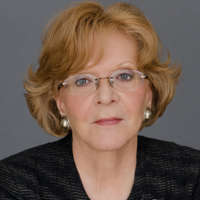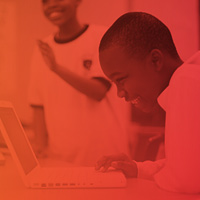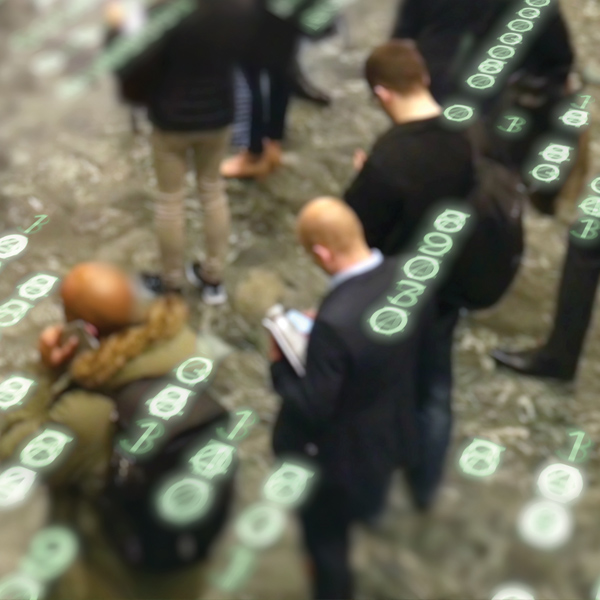Welcome and good afternoon. What a wonderful turnout; a real testament to the desire to understand what is really going on with our young people and their use of digital media. Those of you who are parents see it every day; today we will learn what new research has to tell us.
I am Julia Stasch, Vice President and director of U.S. grantmaking for the MacArthur Foundation. I am pleased to be here with you today and sharing what will be a great discussion with those of you watching via the web and in Second Life. This is our sixth regional forum on the topic of digital media and learning. Thank you to our partners in organizing this event, Jim Steyer and Linda Burch of Common Sense Media. Special thanks too, to our hosts, Stanford University and Deborah Stipek, dean of the school of education.
Now, settle in and get comfortable. My first reaction to the agenda was—not a two hour program after a long work day. However, I am confident that it will be worth it. This engaging discussion represents, in many ways, the journey MacArthur has taken in the three years that we have been exploring this peril- and promise-filled topic.
Three years ago, we shifted the emphasis in our education grantmaking. We decided to peer over the horizon to see if new digital media tools might affect how kids think and learn in say 5 to 10 years. Reality hit—it is not in the future—10, 5 or even 2 years from now—it is now.
Media usage studies by the Pew Internet Forum on American Life and the Kaiser Foundation say that: over 83 percent of all kids play video games regularly; 53 percent have created media content; in two years more than 50 percent will be active in a virtual world, and social networks like MySpace and Facebook have tens of millions of users. When did that happen?
Running to catch up, we figured out how a social network works and what makes it fun, and we jumped into Second Life, avatars and all. None of that however told us what young people are actually doing with these new tools, games, and places and what it all means for them as thinkers, learners, leaders—all the roles they explore and adopt as they grow.
Are they playing? Are they learning? Are they lonely and isolated? Are they in groups and engaged? Are they bringing their every day activities in the physical world online? Are they learning or connecting to new people in ways that we could not have imagined as we were growing up? Are they wasting time or is their interest piqued in topics far from their daily lives? Are they plotting the destruction of the world, annihilating the bad guys one by one; or are they on the road to becoming the engaged citizens we want them to be?
Should we be enthused about the ubiquitous nature of digital media in young people’s lives, or deeply concerned? As parents, should we regulate our kids’ involvement in games and social networks or should we join in? As educators, how can we spark the engagement and motivation we see? As citizens, are we witnessing the end of a concern for the common good or the evolution of a new kind of engaged and caring community? Perhaps these are some of the questions that brought you here tonight. We have a wonderful set of presentations and panelists, but first I would like to briefly answer another question. Why is a major international foundation, at work in 60 countries, with offices in Chicago, Russia, India, Mexico, Nigeria and soon China—with programs in human rights, peace and security, population and reproductive health, conservation, migration and the world-wide movement of people, juvenile justice, affordable housing and community and economic development, thinking about digital media—why indeed?
Across all that we do is a search for what is new, sometimes only dimly perceived, but likely to bring about or foster lasting change. Technology—digital media—is one of those forces, likely to profoundly affect human interaction and human potential, in positive and negative ways we do not fully understand.
While we seek the new, we also are committed to rigor and evidence in the questions we ask, the reforms we seek and the changes in practice and policy we support. This is the approach we hope to bring to the work in digital media and learning.
We launched our $50 million program in 2006 with a set of research studies to get at a central question: are young people changing through participation with digital media? USC researcher Mimi Ito and the late Peter Lyman at UC Berkeley proposed what has turned out to be one of the largest ethnographic studies ever conducted, and what is likely to be the seminal study of young people’s participation in digital media.
Tonight, you will hear the first public report on this study. Full findings will be available in a book to be published later this year. Our researchers will present four case studies—four glimpses into the lives of young people in the 21st century, in the voices of young people themselves. The study does not tell us what to do—only what we need to begin to know about the first generation to truly grow up digital.
To complement the voices of youth, provocative panelists will respond to the case studies. From the worlds of web 2.0 technology, the media industry, education and parents, you will hear comments, concerns and questions about the implications of these findings. Connie Yowell, MacArthur’s director of education and the force behind our growing portfolio, will moderate. I anticipate a lively discussion and hope you will in. We have made sure there will be time for your questions.
While MacArthur started with a question and we are eager to see what solid research tells us, evidence is emerging that profound changes may indeed be occurring—changes in the way young people play, learn, and express themselves, the way they interact with others, navigate information, judge its credibility, make other kinds of judgments and grapple with ethical dilemmas.
Research points to a new participatory culture, with low barriers to artistic and personal expression. Young people are sharing their journals, their movies, their musical compositions and performances, their variations on the plots of Harry Potter books and other fiction, and their emerging identities, not only with their friends possibly with millions of people—around the globe.
These changes have consequences for individuals, families, institutions and society. That is why our program is more than research. It is about new learning environments and new roles for schools, libraries, museums, after school—everywhere learning takes place, and it is about helping to develop an emerging academic, professional and commercial field at the nexus of digital media and learning.
Society may indeed be at an inflection point, where change accelerates, old ways disappear before our eyes, systems no longer work and indescribable innovation becomes possible. If this is true, let us understand it—the good and the bad—and harness it. Let us put it to work for human potential and a better society.
Let us start with that glimpse into the lives of our kids, with Professor Mimi Ito and her colleagues.
Thank you.

Julia M. Stasch
Former President




